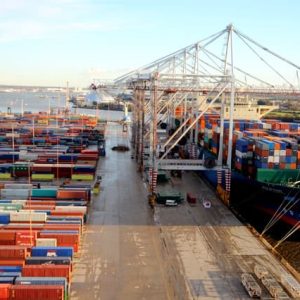
The UK Government’s 2025 Spending Review (SR25), unveiled on 11 June, has set the tone for the country’s fiscal priorities through to 2029. While the review broadly focuses on economic renewal, healthcare, and national security, it also carries significant implications for the logistics and supply chain sector, though not all of them are straightforward.
A Mixed Bag for Freight and Logistics
The headline figure of £20 billion in transport investment sounds promising, but much of this funding had already been pledged in previous announcements. Still, there are several key developments that logistics professionals should watch closely:
1. Rail Infrastructure: A Boost for Intermodal Freight
- Transpennine Route Upgrade: A £3.5 billion investment will modernize this critical east-west corridor, linking major logistics hubs like York, Leeds, and Manchester. The upgrades include electrification and line speed improvements, which are expected to enhance the movement of containerized goods from ports on the Humber and Mersey.
- East West Rail: With £2.5 billion allocated, this project connecting Oxford and Cambridge has been redesigned to include freight capabilities. This could relieve pressure on London’s congested routes and open new freight paths into the Midlands’ “Logistics Golden Triangle”.
2. Missed Opportunities
Despite these positives, the review left out funding for the Ely Area Capacity Enhancement, a long-awaited project crucial for improving access to the Port of Felixstowe, one of the UK’s busiest container ports. This omission has disappointed many in the industry, though there is hope it may be addressed in the upcoming national infrastructure strategy.
3. Regional Developments
- Wales: A notable win came with £445 million earmarked for rail improvements in North Wales, particularly around Wrexham. Enhancing the Bidston Line could ease freight congestion and improve links between North Wales and the Mersey port complex.
Strategic Implications for the Industry
The Spending Review signals a continued commitment to decarbonisation and regional connectivity, aligning with broader goals of sustainable growth. However, the lack of direct mention of freight in many of the plans suggests that logistics stakeholders will need to remain proactive in advocating for their needs.
Key Takeaways for the Supply Chain
- Plan for rail-based growth: With significant investment in rail, companies should explore shifting more freight from road to rail.
- Monitor regional developments: Opportunities may arise in Wales and the Midlands as infrastructure improves.
- Stay engaged: The upcoming national infrastructure strategy could fill in some of the gaps left by SR25.
Conclusion
While the 2025 Spending Review offers some encouraging signs for the logistics and supply chain sector, particularly in rail freight, it also highlights the need for continued vigilance and advocacy. The industry must ensure it remains at the forefront of the UK’s economic and infrastructure planning.
Contact a member of the team here to discuss how we can support your supply chain.









